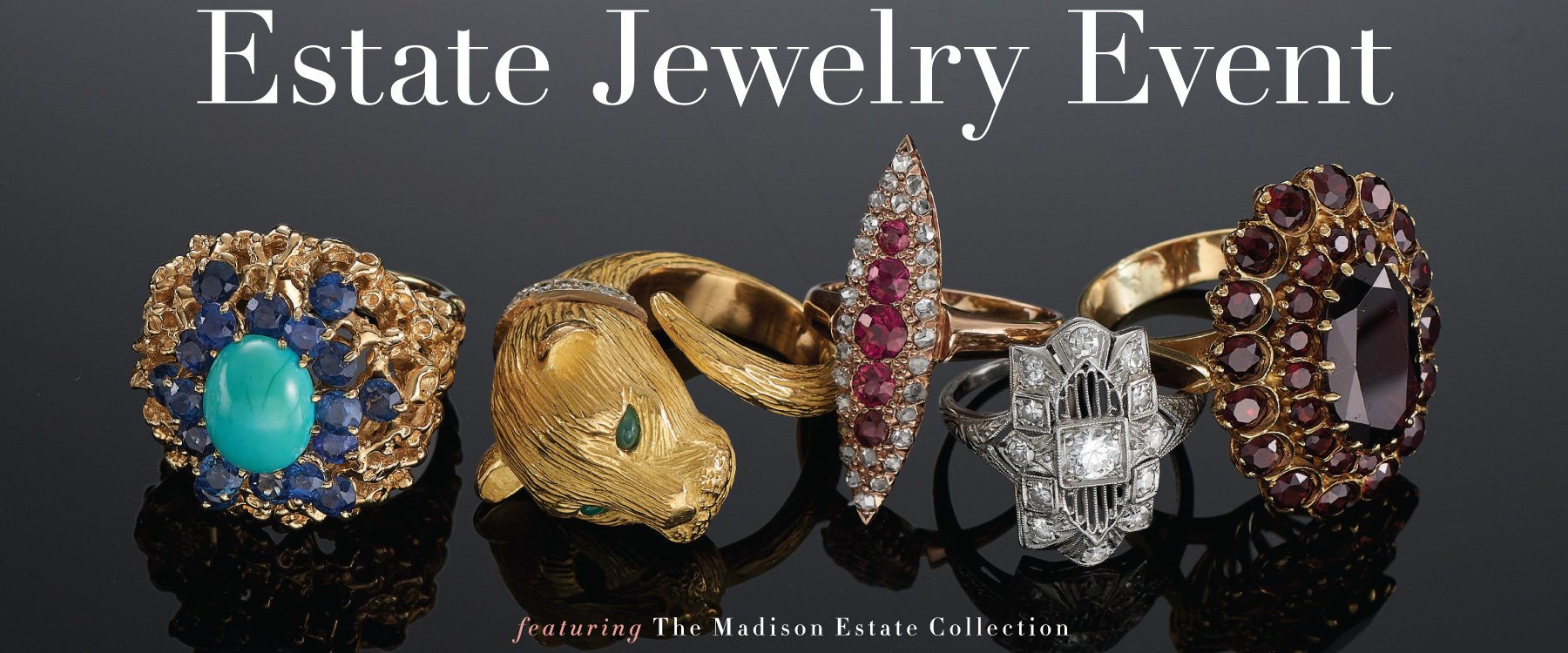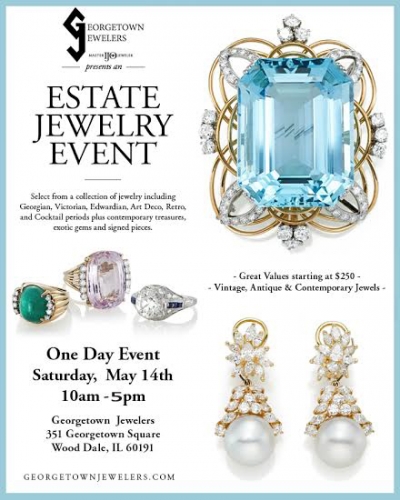Estate Jewelry Buyers Near Me: Selling Your Estate Jewelry with Confidence
Uncover the Rich History Behind Stunning Estate Fashion Jewelry Collections
The exploration of estate precious jewelry collections offers an unique window into history, revealing the detailed relationship in between craftsmanship and social advancement (estate jewelry austin). Each item is not simply an accessory yet a testimony to the creative motions and social worths of its time, from the elaborate details of the Victorian age to the streamlined elegance of the Mid-Century Modern. As we examine these amazing artifacts, we uncover stories that go beyond generations, motivating us to take into consideration not simply their charm, but the lives they have touched and the minutes they have actually experienced. What secrets might these collections still hold?
The Beginnings of Estate Fashion Jewelry
How did estate jewelry involved symbolize the abundant background and artistry of past ages? The origins of estate precious jewelry can be mapped back to various periods of craftsmanship, where jewelry was not just an accessory yet a representation of societal values, technical improvements, and creative expressions. Each item narrates, commonly connected with the lives of their previous owners, encapsulating individual narratives along with historical contexts.
The term "estate jewelry" normally refers to used items, often from considerable ages such as Victorian, Art Nouveau, or Art Deco. These items were created with careful focus to detail, showcasing the skill of artisans that used products like gold, silver, and valuable gems. Unlike modern precious jewelry, estate pieces typically feature distinct layouts that highlight the visual appeals of their time, therefore offering as substantial links to the past.

Significant Style Eras
Throughout history, numerous notable design periods have actually substantially influenced the evolution of estate jewelry, each identified by unique designs, materials, and cultural contexts. The Georgian period (1714-1837) marked the beginning of detailed styles, typically featuring nature-inspired motifs and using products like gold, silver, and gemstones embeded in sophisticated settings. Following this, the Victorian period (1837-1901) presented charming themes, with nostalgic fashion jewelry and innovative strategies such as making use of enamel and cameos.
The Art Nouveau period (1890-1910) commemorated natural types and the beauty of nature, using materials like opals and pearls in moving designs. This was done well by the Art Deco age (1920-1939), which embraced geometric patterns, vibrant shades, and elegant products such as platinum and rubies, mirroring the modernist spirit of the moment.
The Mid-Century Modern period (1940-1960) showcased structured layouts and using non-traditional products, highlighting minimalism and performance. Each of these ages not only mirrors the artistic activities of their time yet additionally envelops the social values and technical improvements that shaped precious jewelry layout, making them an interesting subject for enthusiasts and historians alike.

Famous Estate Fashion Jewelry Collections
The abundant history of estate precious jewelry is magnificently exhibited by a number of distinguished collections that display the virtuosity and craftsmanship from numerous layout eras. Among the most popular is the Cartier Collection, which reflects the high-end and development of the legendary French jeweler. Pieces from this collection frequently feature intricate layouts and splendid gemstones, highlighting the brand name's dedication to great craftsmanship.
An additional notable collection is the Duchess of Windsor's fashion jewelry collection, which comprises several distinct items, including the legendary "Windsor" arm band. This collection not just exhibits the elegance of the Art Deco period however likewise brings an abundant story of love and loss, as it belonged to Wallis Simpson, that famously married Edward VIII.
The collection of the late starlet Elizabeth Taylor also stands apart in the world of estate fashion jewelry. With various items created by renowned jewelry experts like Bulgari and Cartier, her collection embodies beauty and elegance, highlighting her personal design and fondness for unique gemstones.
These popular estate precious jewelry collections work as a testament to the long-lasting allure of fine precious jewelry, supplying understanding right into the imaginative and cultural movements that shaped their production.
The Social Significance
Estate fashion jewelry collections hold extensive cultural value, mirroring not just the aesthetic worths of their respective ages but also the social and historic contexts in which they were created. Each piece frequently embodies the workmanship and creative trends of its time, showcasing the advancement of layout and modern technology in precious jewelry making.
Furthermore, these collections function as concrete links to cultural practices and routines. Wedding celebration bands and treasure breastpins might signify love and familial bonds, while items decorated with specific gemstones can represent cultural or local identifications. The materials utilized-- whether gold, silver, or gemstones-- typically inform stories of profession, exploration, and the wide range buildup of cultures.
Additionally, estate jewelry can work as historic artifacts, providing understandings right into the lives of people and the societal norms they browsed. The means precious jewelry was used and valued can expose much regarding sex duties, condition, and individual expression within varying cultural landscapes. Estate jewelry goes beyond simple ornamentation, acting as a rich narrative of human experience, artistry, and cultural heritage, welcoming modern target markets to involve with the past in a purposeful means.
Taking Care Of Your Estate Pieces
Taking care of estate jewelry items calls for a thoughtful method to guarantee their durability and preserve their one-of-a-kind characteristics. To maintain the charm of these prizes, it is necessary to manage them with care. Constantly tidy estate precious jewelry making use of a soft, lint-free cloth after each wear to get rid of oils and dirt. For deeper cleansing, use a mild soap solution and a soft brush, making sure to stay clear find more information of harsh chemicals that might harm fragile products.
Storage is equally essential; shop pieces individually in a fabric-lined box to stop entangling and scratching. Consider utilizing anti-tarnish bags or cloths for silver products, as this helps to slow down the tarnishing process. Additionally, avoid revealing jewelry to too much dampness, severe temperatures, or direct sunshine, which can adversely impact gemstones and steels.
Consulting a jeweler experienced in vintage or antique pieces can give customized treatment options. By implementing these methods, collection agencies can preserve their estate jewelry's aesthetic and historical value, making certain these items proceed to be cherished for generations to come.
Verdict
In verdict, the exploration of estate precious jewelry collections discloses a tapestry of creative expression and social significance, mirroring the worths and looks of different historical durations. Each piece acts as a testament to extraordinary estate jewelry workmanship and the narratives of those that when owned them. Comprehending the origins, layout eras, and remarkable collections improves appreciation for these artifacts, emphasizing their role in protecting social heritage and encouraging ongoing stewardship and care for these remarkable prizes.
The exploration of estate jewelry collections offers an unique home window into background, exposing the detailed partnership between craftsmanship and cultural evolution. The origins of estate precious jewelry can be traced back to numerous periods of workmanship, where jewelry was not merely an accessory however a reflection of social values, technological improvements, and creative expressions.The term "estate precious jewelry" typically refers to used items, often from significant periods such as Victorian, Art Nouveau, or Art Deco.The rich history of estate precious jewelry is magnificently exhibited by several prominent collections that display the artistry and workmanship from numerous layout ages.In verdict, the exploration check of estate precious jewelry collections exposes a tapestry of artistic expression and social relevance, mirroring the worths and aesthetics of numerous historic durations.